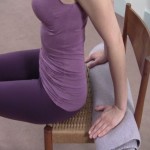Carpal Tunnel Syndrome Exercises
Will exercise relieve stress in my arms and hands?
Yes and no. Yes if Carpal Tunnel Syndrome Exercises are appropriate for your specific condition. No if it causes further pain or is performed infrequently.
Why do Carpal Tunnel Syndrome exercises help with pain?
If your hands and wrists hurt from the muscular tension of cumulative stress, then our finely tuned Carpal Tunnel Syndrome exercises can help. Repetitive tension markedly increases the painful accumulation of toxic chemicals in an area. In the same way a kink in a water hose slows the flow of water, tension in the muscles compresses blood and nerves. Sustained muscular tension squeeze shut the rich network of capillaries supplying the nutritional and oxygen needs of a body region. The good news – the energy crisis caused by this vicious cycle can be reversed in a short period of time.
Properly performed movement restores muscles to their resting position. Tight muscles hurt; long muscles feel normal.
Self Test for tight muscles

Do you have taut bands on the palm side of your forearm?
To test:
- Start two inches below the bend of your elbow on the palm side of your forearm.
- Roll the knuckles or fingertips of the other hand back and forth over the flexor muscles of your forearm. Do you feel any taut bands or stringy, snapping cords? If yes, that’s trouble, but very treatable.
What kind of Carpal Tunnel Syndrome exercises are best for me?
Start with gentle stretching and nerve gliding movements. Find out ways to not only correct your hand problem but also how to prevent it from coming back by watching a few short, easy to follow videos. The stretching routine provided has been scientifically researched to reduce the pain associated with Carpal Tunnel Syndrome and restore grip strength. The 12-step routine also improves posture.
Will exercise help me before or after surgery?
It’s more difficult to recover from surgery when the tissues surrounding the median nerve are dried out and tough. Once the inflammation and any underlying condition are addressed, the soft tissue of your neck, shoulders, arms and hands can be retrained to function smoothly. Properly sequenced exercise, performed frequently, can help the tendons and the nerves slide and glide – before or after surgery.
It’s not enough just doing a few stretches off YouTube. To truly restore the smooth glide of the nerves and reduce the compression on the blood vessels, a whole body approach is needed. The Carpal Tunnel Coaching approach restores hand and wrist strength in less than 20 minutes per day every other day for a month.
References
Travell J, Simons D & L: (1999) Myofascial Pain and Dysfunction The Trigger Point Manual. Vol. 1, 2nd ed. Williams & Wilkins (p.71).




